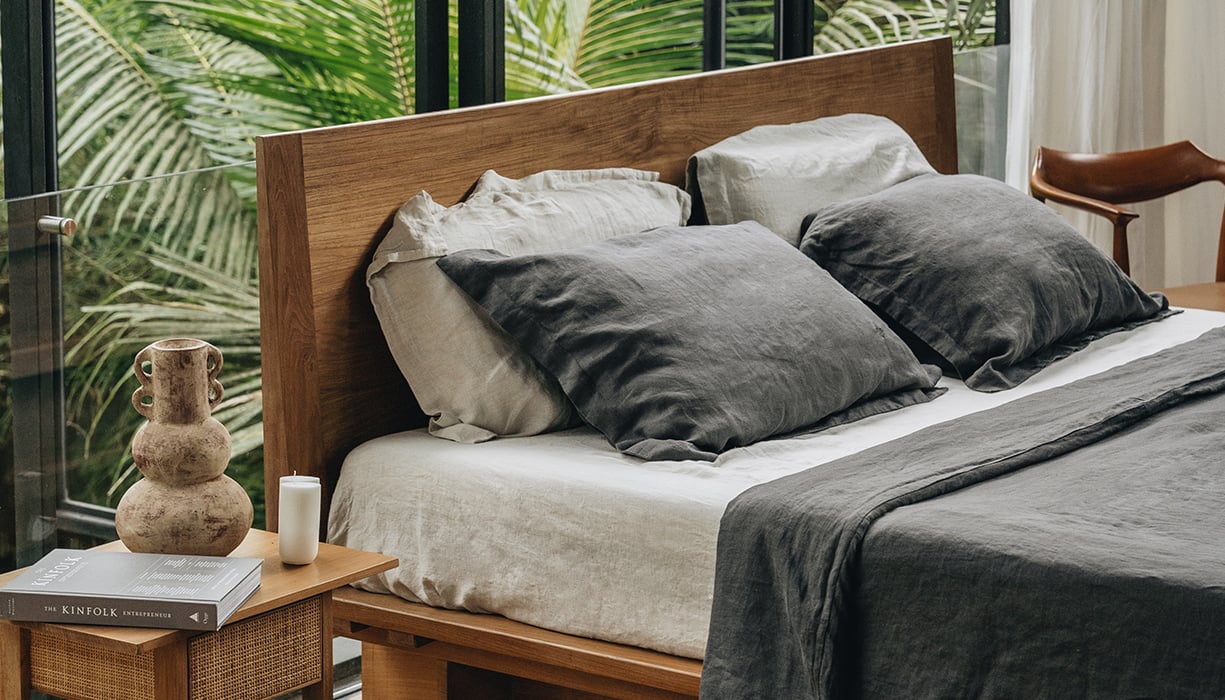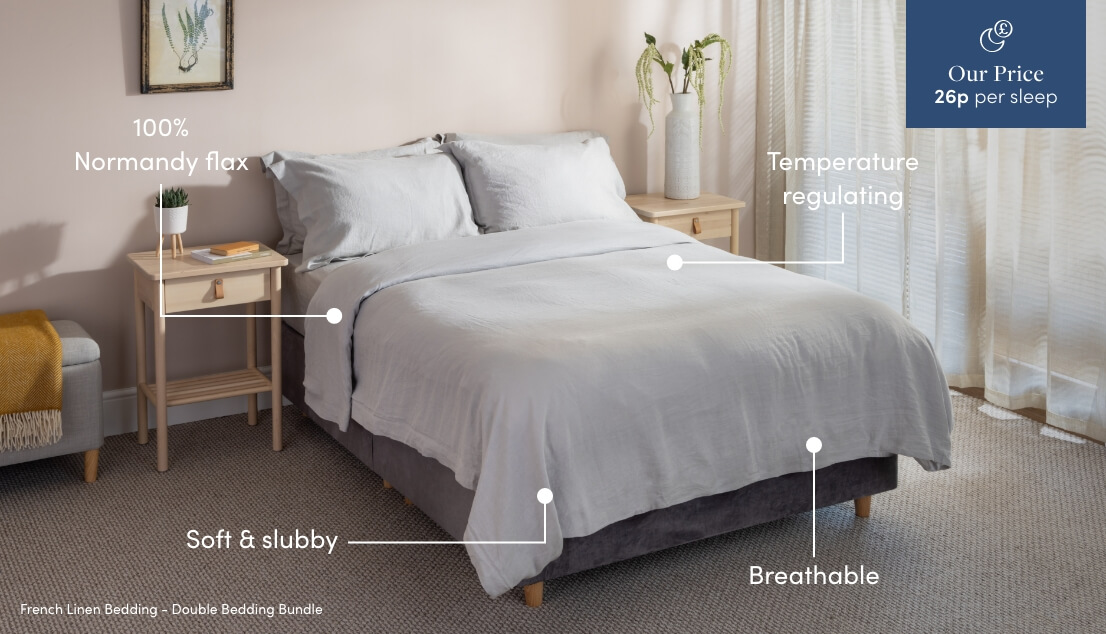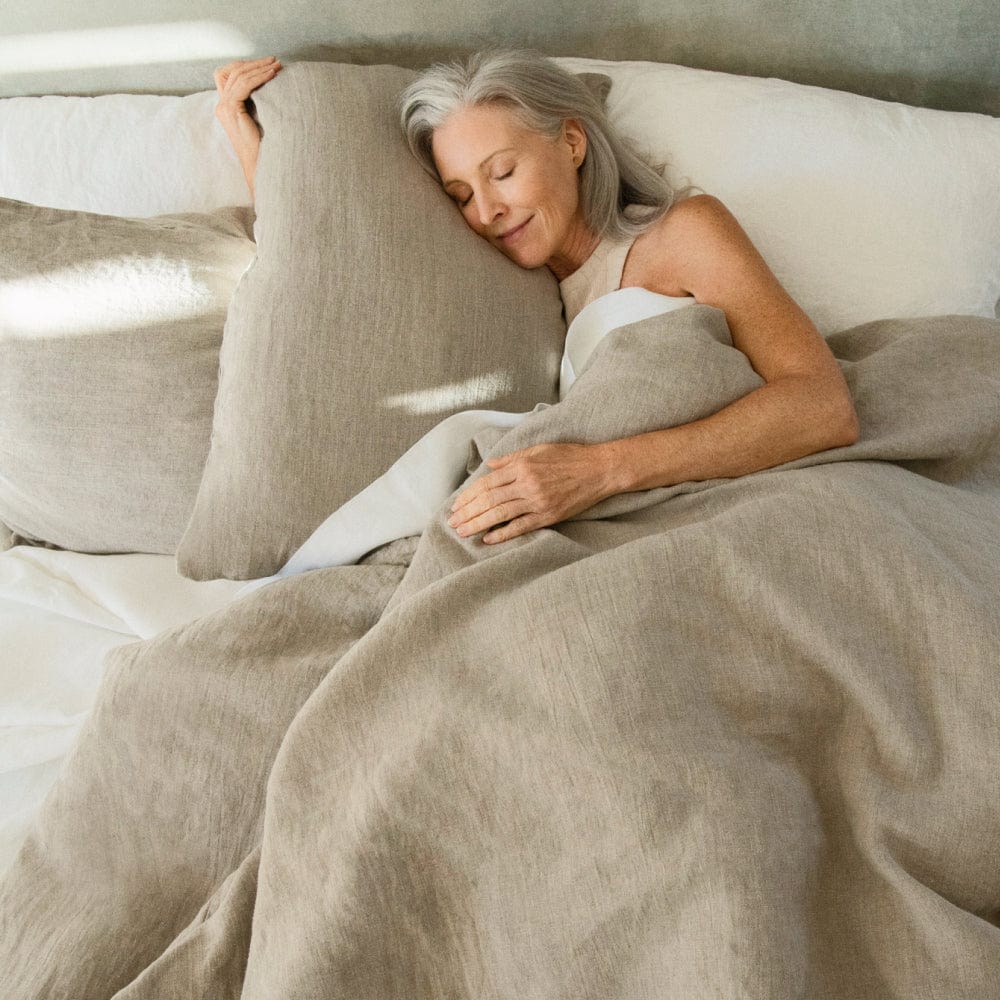10 Ways to Make Australia Linen Your New Go-To Fabric
10 Ways to Make Australia Linen Your New Go-To Fabric
Blog Article
Recognizing Bed Linen: The Eco-Friendly Choice for Comfortable Living
When you think of environment-friendly textiles, linen typically stands out for its special top qualities. This natural textile, made from the flax plant, supplies both convenience and sustainability. Its amazing properties make it a suitable choice for warm climate and durable usage. What genuinely sets bed linen apart from various other materials? Comprehending its origins and benefits can change exactly how you watch home textiles. Allow's explore the remarkable globe of bed linen even more.
The Beginnings of Bed Linen: From Flax to Textile

Bed linen, among the earliest fabrics recognized to humankind, has a fascinating trip that begins with the humble flax plant. You may be shocked to discover that this plant grows in trendy environments, prospering in areas like Europe and parts of Asia. Once harvested, the flax stalks go through a procedure called retting, where they're saturated to separate the fibers from the woody parts. After retting, the fibers are brushed and spun into thread, ready for weaving.
When you see linen textile, you're seeing centuries of craftsmanship. The weaving procedure changes those spindles of string right into the attractive, durable cloth you like. Linen has been treasured for its natural feel and look, making it a favored for everything from apparel to home fabrics. Following time you touch bed linen, remember its rich background that connects you to old societies and their conventional techniques.
The Unique Properties of Linen
One of the standout features of this impressive fabric is its breathability. When you use linen, you'll see how it enables air to distribute, maintaining you cool down on warm days. This residential property makes it an excellent selection for summer clothing and sheets.
Linen additionally boasts outstanding moisture-wicking capabilities, pulling sweat far from your skin and enabling it to vaporize quickly. You will not really feel clammy, even in damp problems. Furthermore, linen is sturdy, typically becoming softer and extra comfy with each wash, which suggests it can stand the examination of time in your closet.
Another distinct aspect is its natural appearance; the minor irregularities offer bed linen a character that boosts your style. And also, it stands up to wrinkles better than numerous various other materials, so you can appreciate a kicked back yet polished look without much effort. Welcome linen, and you'll value its comfort and one-of-a-kind appeal.
Environmental Benefits of Linen
When you choose linen, you're not simply going with a stunning material; you're also supporting lasting production techniques. Linen's compostable and biodegradable nature makes it a wise selection for the environment. And also, it requires significantly much less water to produce contrasted to other fabrics, helping conserve this precious source.
Sustainable Production Practices
Although several fabrics have significant ecological effects, linen stands out due to its sustainable production methods. When you choose bed linen, you're choosing for a material made from the flax plant, which requires minimal water and pesticides.
Linen manufacturing is frequently much less energy-intensive contrasted to various other fabrics, as it involves natural processes instead of artificial treatments. By sustaining linen, you're adding to a more sustainable textile market that prioritizes eco-friendly practices. Picking bed linen not only boosts your comfort but additionally straightens your worths with environmental duty.
Biodegradable and Compostable Material
Linen's green nature extends past its lasting manufacturing; it's compostable and additionally naturally degradable, making it a superb choice for ecologically mindful customers. When you pick linen products, you're going with products that break down naturally, returning nutrients to the earth. This suggests that at the end of their life cycle, your linen products will not add to land fill waste. Rather, they can decompose safely, minimizing your ecological impact. Furthermore, composting linen can enrich soil, promoting healthy plant growth. By incorporating bed linen right into your home, you're not simply appreciating its convenience and durability; you're also helping and supporting eco-friendly practices create a healthier planet. Embrace bed linen, and feel good about your choices for the setting.
Low Tide Intake
Among the standout benefits of linen is its reduced water intake during growing. Unlike cotton, which needs substantial irrigation, linen's flax plant thrives on minimal water, making it a much more sustainable selection. You'll value knowing that for each ton of bed linen generated, significantly less water is required compared to several other fabrics. This indicates that choosing bed linen helps save vital freshwater resources, which is critical in today's climate. In addition, linen's all-natural drought resistance enables it to expand in less-than-ideal conditions, better lowering its ecological influence. By going with bed linen, you're not simply spending in quality; you're additionally supporting a textile that advertises responsible water use and adds to a healthier world for future generations.
Linen vs. Other Fabrics: A Contrast
When you contrast bed linen to various other fabrics, you'll Linen Australia discover its remarkable breathability and convenience, making it excellent for cozy weather. Plus, linen sticks out for its durability and longevity, commonly lasting longer than many commonly used materials. As you consider your choices, the environmental effect of each material will likewise play a necessary duty in your decision.
Breathability and Comfort
Bed linen stands out amongst materials for its remarkable capacity to enable air flow. Unlike synthetic textiles, which can trap heat and dampness, bed linen's natural fibers wick away sweat, maintaining you great and dry.
Cotton is commonly applauded for its gentleness, yet it doesn't match bed linen's breathability. Also blends may not supply the very same air flow. If you prioritize comfort, particularly in summer season, bed linen needs to be your go-to selection. It not just keeps you feeling fresh but also brings a timeless style to your closet.
Resilience and Long Life
While numerous textiles provide differing degrees of longevity, bed linen truly stands out in long life, making it a smart financial investment for your wardrobe. Unlike cotton or synthetic products that might break promptly, linen gets more powerful with each clean. Its natural fibers withstand fraying and fading, ensuring your garments look excellent over time. You'll discover that bed linen's breathable nature additionally reduces wear from sweat and wetness, which can harm various other fabrics. Plus, its capability to stand up to heats implies it won't diminish quickly in the clothes dryer. You're opting for a durable material that can take care of day-to-day usage while maintaining its charm when you choose linen. Count on me, your long-lasting financial investment in bed linen will certainly settle with years of elegant, comfy wear.
Environmental Effect Comparison
Although numerous materials contribute to ecological concerns, linen stands apart for its environment-friendly high qualities. Unlike cotton, which needs huge water resources and chemicals, linen is made from flax, a plant that thrives on minimal water and requires fewer chemicals. This means you can feel great regarding your option while decreasing your carbon footprint.
When compared to artificial textiles like polyester, linen's biodegradability shines. While polyester can take centuries to disintegrate, linen breaks down normally, returning nutrients to the soil.
Picking linen not only advertises sustainable farming techniques however also sustains a healthier world. By selecting bed linen over traditional materials, you're making a conscious choice that benefits both your convenience and the environment.
Taking care of Your Linen Textiles
To ensure your linen textiles continue to be in wonderful condition, you'll wish to follow some uncomplicated care standards. First, wash your bed linen in cold water on a mild cycle to avoid it from diminishing or losing its shape. Stay clear of using bleach, as it can harm the fibers. Rather, choose a light detergent that's complimentary from rough chemicals.
When it comes to drying out, air drying out is best. If you utilize a clothes dryer, pick a reduced warmth setting and remove the products while they're still a little damp to decrease creases. Iron the bed linen while it's still damp for much easier handling, or vapor it to maintain it looking crisp.
For storage space, keep your linen in an awesome, dry location. Prevent direct sunlight to avoid fading. With these straightforward practices, your linen fabrics will keep their charm and last for years, making them a sustainable enhancement to your lifestyle.
Integrating Linen Into Your Home Décor
Caring for your bed linen fabrics not only protects their quality yet additionally opens a globe of opportunities for incorporating them into your home style. You can start tiny by including bed linen throw pillows to your couch, instantaneously boosting the space with appearance and warmth. Take into consideration linen curtains that filter sunlight wonderfully, creating a soft, airy atmosphere in any area.
For an extra rustic look, attempt utilizing linen table linens or joggers during meals; they add a classy touch and are simple to tidy. If you're feeling daring, mix and match various linen shades and patterns to create a special, layered effect.
Do not forget bed linen blankets-- curtain one over a chair or your bed for a welcoming feel. By attentively incorporating linen right into your decoration, you enhance both comfort and design, making your home a peaceful hideaway.
The Future of Bed Linen in Lasting Living
As customers increasingly focus on sustainability, linen becomes a frontrunner in environmentally friendly fabrics. Its production uses much less water and pesticides contrasted to standard cotton, making it a more ecologically liable selection. As you look towards a sustainable future, integrating linen into your wardrobe and home can significantly lower your carbon footprint.
Ingenious brands are now concentrating on sustainable practices, from utilizing natural flax to implementing round economic situation concepts. You'll find that linen's durability implies it lasts much longer, lowering the requirement for constant replacements.
Furthermore, as even more individuals accept minimalist lifestyles, bed linen's timeless allure and flexibility will certainly keep it pertinent. By selecting bed linen, you're not simply choosing convenience; you're likewise sustaining lasting practices.
In the upcoming years, the demand for linen is anticipated to expand, strengthening its area in a more eco-conscious globe. So, take into consideration making linen a staple in your lasting living journey.
Regularly Asked Questions
Is Bed Linen Ideal for People With Allergic Reactions?
Yes, bed linen's all-natural fibers are hypoallergenic, making it suitable for individuals with allergies. Its breathable nature helps in reducing moisture and germs accumulation, adding to a healthier resting setting. You'll likely discover it comfortable and safe.
Can Linen Be Colored Quickly?
Yes, you can dye bed linen conveniently. Its natural fibers absorb dyes well, enabling vivid shades. Just ensure you use the appropriate dye type and adhere to appropriate techniques to achieve the wanted results without damaging the fabric.
Exactly How Does Linen Contrast in Resilience to Cotton?

What Weight of Bed Linen Is Ideal for Summertime Garments?
For summertime clothes, lightweight bed linen around 4 to 5 ounces per lawn is optimal. It keeps you awesome, breathable, and comfortable in heat (Linen). You'll appreciate just how it drapes and actions with you effortlessly

Can Linen Be Utilized for Outdoor Furniture?
Yes, you can utilize linen for outside furnishings. It's breathable and sturdy, making it a great choice for warm climate. Simply be certain to choose a treated version to endure the elements and maintain its look.
Verdict
Including bed linen into your life not just boosts your convenience yet likewise supports an extra sustainable future. With its unique properties and marginal environmental influence, linen is a wise choice for your home style and lifestyle.
Bed linen's naturally degradable and compostable nature makes it a wise selection for the environment. By including linen into your home, you're not simply enjoying its comfort and durability; you're likewise sustaining environmentally friendly techniques and helping develop a healthier world. The Future of Bed Linen in Sustainable Living.

Report this page